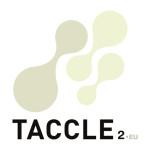Overview In the final activity, students will learn how fonts are deigned by creating their very own! www.fontstruct.com is an excellent tool for creating complete fonts in upper and lower case lettering. Description Tell students that they are going to design a font to be used when submitting their next project, portfolio, assignment or essay. Full Article…
Word Power
Overview Using everything they’ve learnt, students use graphic illustrations as a campaign tactic to publicise an issue that is important to them. This could be a local cause e.g. the building of a new road or houses on the site of ancient woodland or a global issue e.g. the impact of palm oil production on Full Article…
Animal Alphabet
Overview In this activity students learn how to create digital images and pictures using words. Unlike regular word cloud software, the image isn’t created by the software… they must plan and draw it themselves. Students will learn to focus on typographic composition and make appropriate changes to their work as it develops. Description Using the Full Article…
Typography Makeover
Overview In this activity, students study signs and announcements found in public places and discuss their overall effectiveness. In particular they will develop their understanding of typographic composition and how this can be manipulated to influence people. They will give an existing sign a makeover using professional illustration software. Description To start students will need Full Article…
TYPOGRAPHY
PROJECT Curricular Areas: Visual arts and language. It can be used to highlight issues relating to PHSE or geography too. Learning Opportunities & Skills: Image editing, colour compositions, font editing, vector draw. About this Unit: Complex language is arguably mankind’s greatest invention. It affects almost every aspect of our lives and can influence anything from what Full Article…
Public Prompts
Overview In the final activity, students create digital artefacts in response to the work of other groups. Then they use their best prompts in a public campaign. Finally, students reflect on what has worked, what hasn’t worked and why. Description The students now look at the photo prompts of other groups and choose which ones Full Article…




 English
English Nederlands
Nederlands Deutsch
Deutsch Italiano
Italiano Español
Español Português
Português Română
Română Cymraeg
Cymraeg